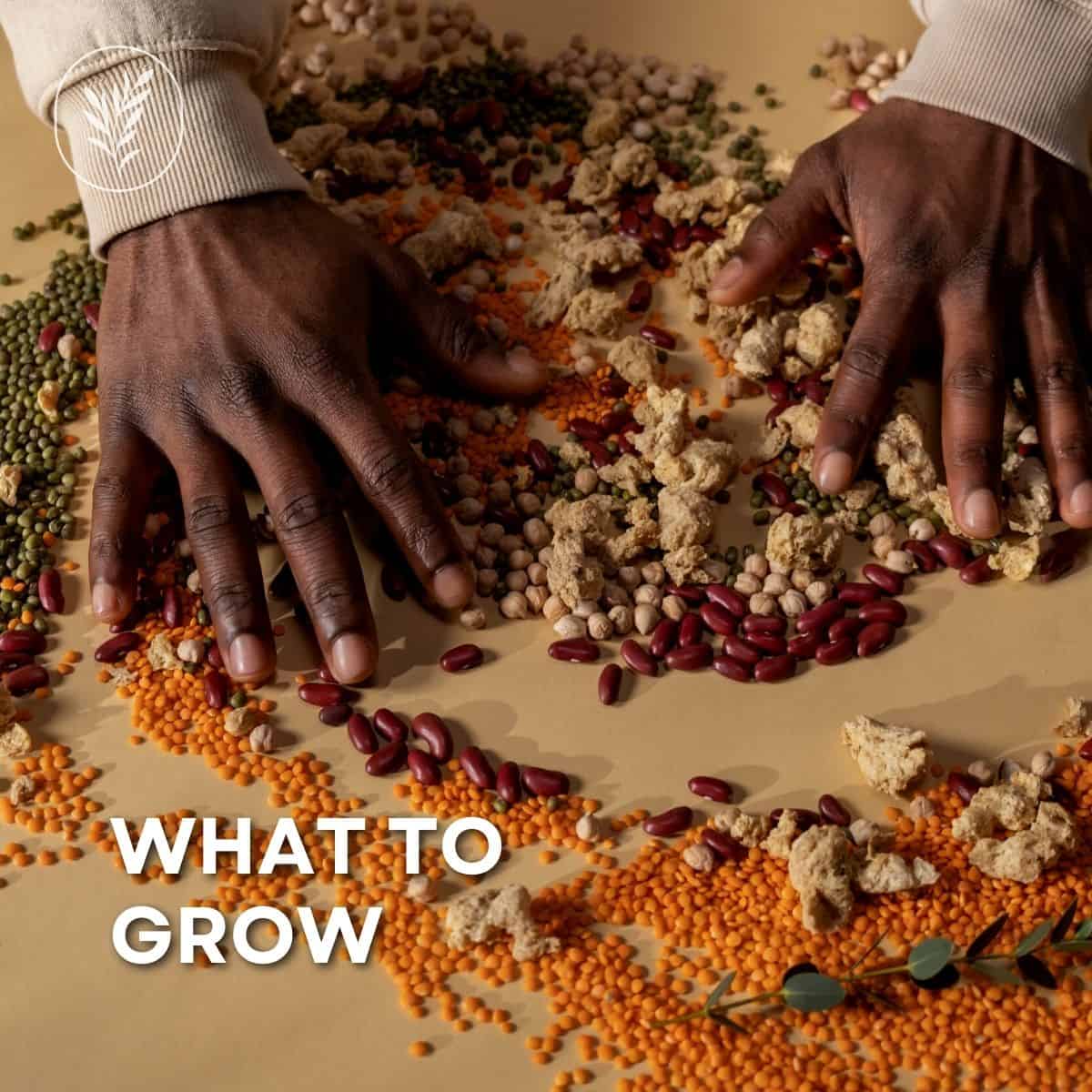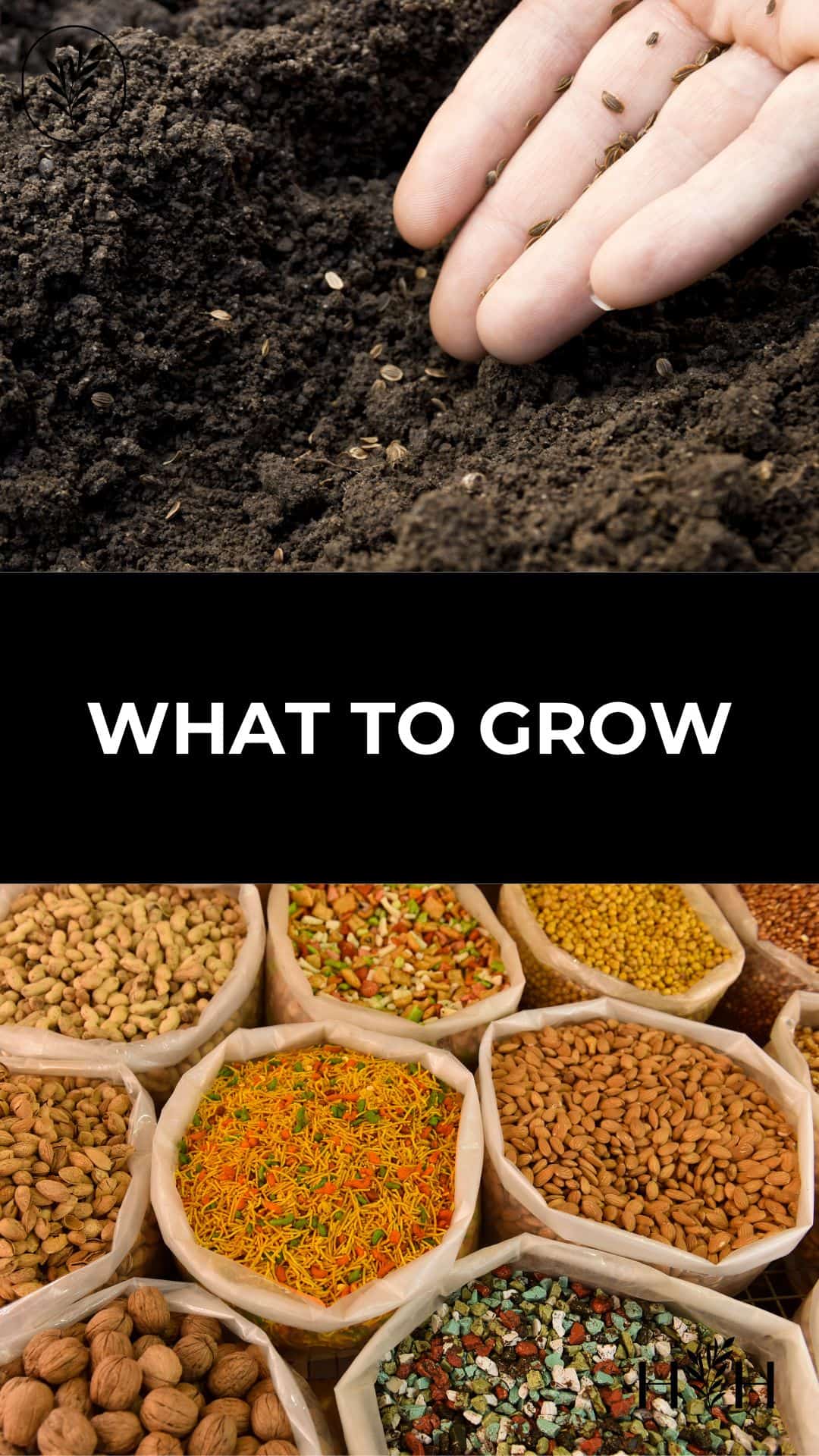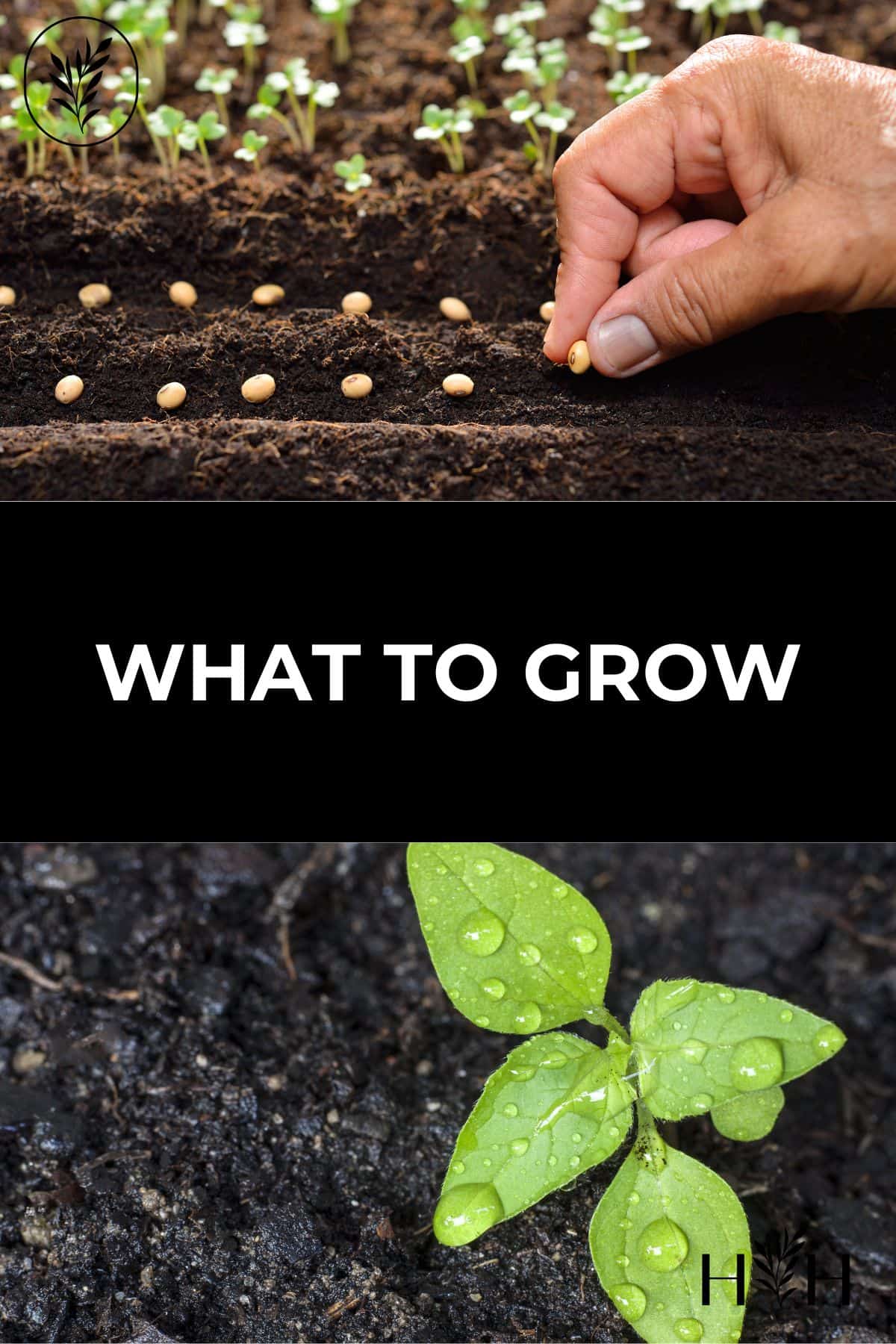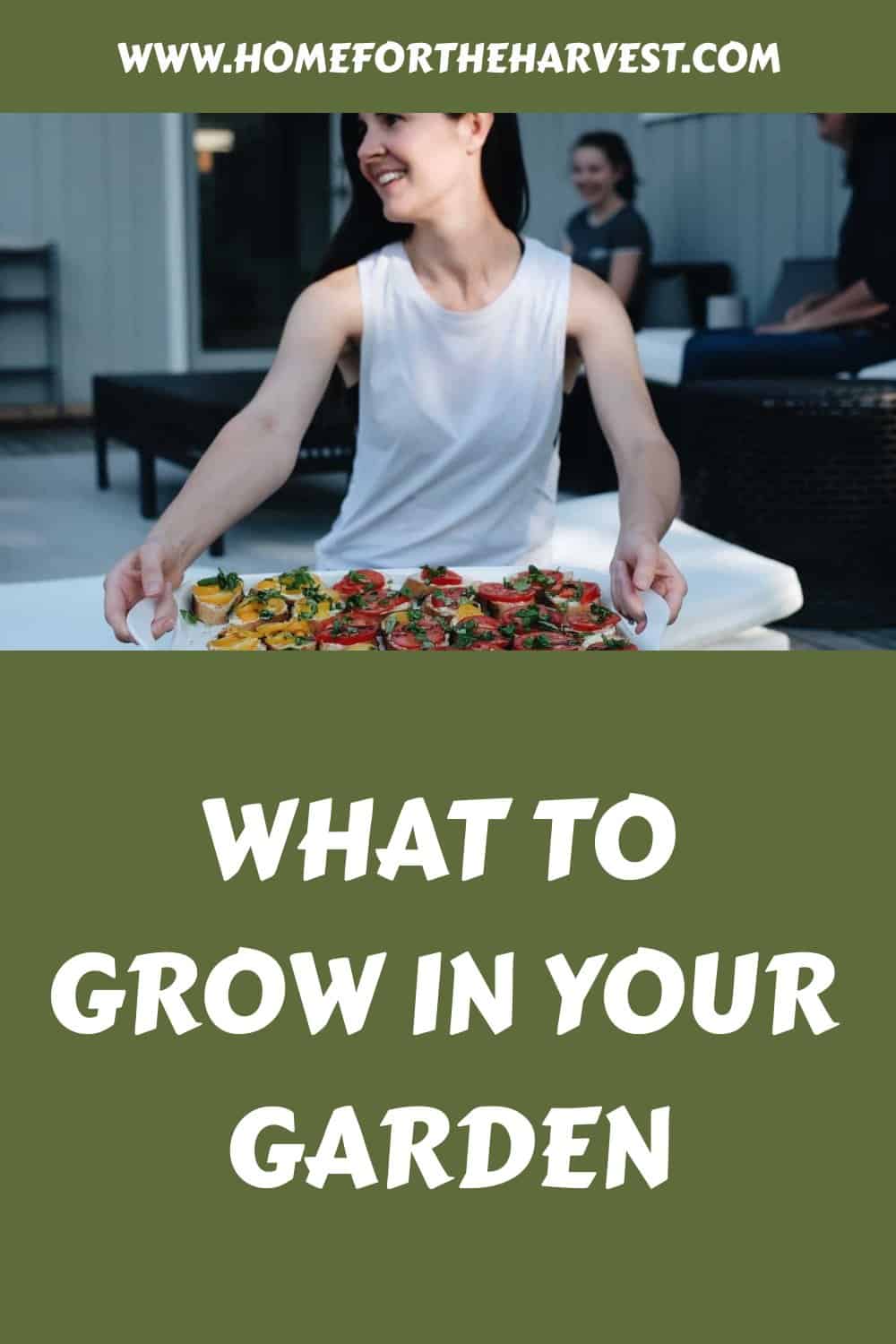Choosing what to grow in your garden is one of the most enjoyable steps of garden planning. Dreaming of an abundant garden is enough to make anyone look forward to early spring.
With early spring in mind, it’s easy to flip open a seed catalog and want to grow absolutely everything. You may find that even if you eat beets only once a year, all of a sudden you want to grow 3 different varieties!
Resist the urge to buy every seed packet you see, and instead, focus on achieving your goal for your garden by choosing the right crops for your unique situation.
What can you actually grow in your garden?
One of the first steps when deciding what to grow is to consider what growing zone you’re in. If your family eats bananas every day, but you live in Northern Canada, there are definitely easier crops for you to grow that fit within your growing zone. Whether you simply want to plant vegetables or you’re gearing up for fall harvest, If you don’t know your zone, check out this article to learn what zone you’re in.
Take a moment to consider what your own garden area actually looks like and the environmental conditions it experiences. You may find that your garden is in the shade all afternoon, which may limit your options for plants that can grow. This might encourage you to grow shade-lovers such as salad and smoothie greens. You may also decide that growing a huge pumpkin vine on your tiny patio is more of a chore than you’re ready to take on.
Get some local gardening tips
If you’ve never started a garden before and are unsure what you can grow outside, the Farmers Market is a great place to get inspiration. Generally, most of what you see at a local independent farmers’ market is grown in the area. Take a wander around the local market to get some inspiration. You may also find it helpful to ask your garden mentor what crops grow well in your area and are well suited to your individual garden.
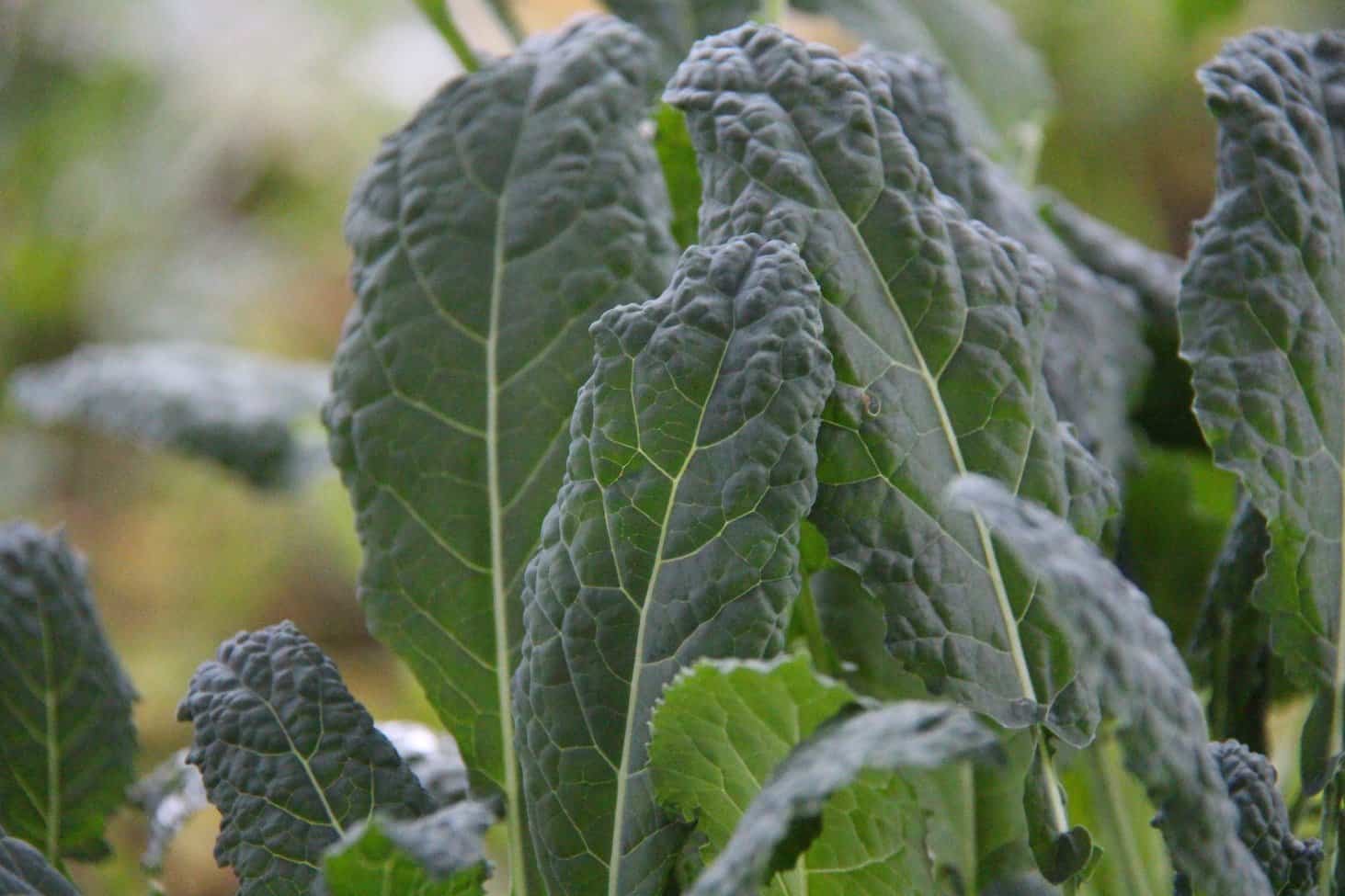
Grow types of food you know you’ll use
The next step in keeping yourself from going crazy with the seed catalog is by making a list of the things you actually eat in your household. In my household, this includes the kale we put in our smoothies, the tomatoes I use for making salsa and pasta sauce, and the fresh herbs I love to season everything with.
Once you have a general idea of what grows well in your area and what you generally eat, you can match up the two to choose what to grow in your garden. Use your garden planner to record a short list of vegetables that your family loves to eat, will grow well in your area, and are in alignment with your garden goal.
If there’s a veggie that you’d love to eat, but just can’t find in your local area, go ahead and add it to the list. “Tomato plants, Pole beans, Bell peppers, Summer squash” Or, if your garden goal is to grow only things you’ve never tried before, make a list of those edibles. Just be clear that the crops you’re listing align with your overall garden goal.
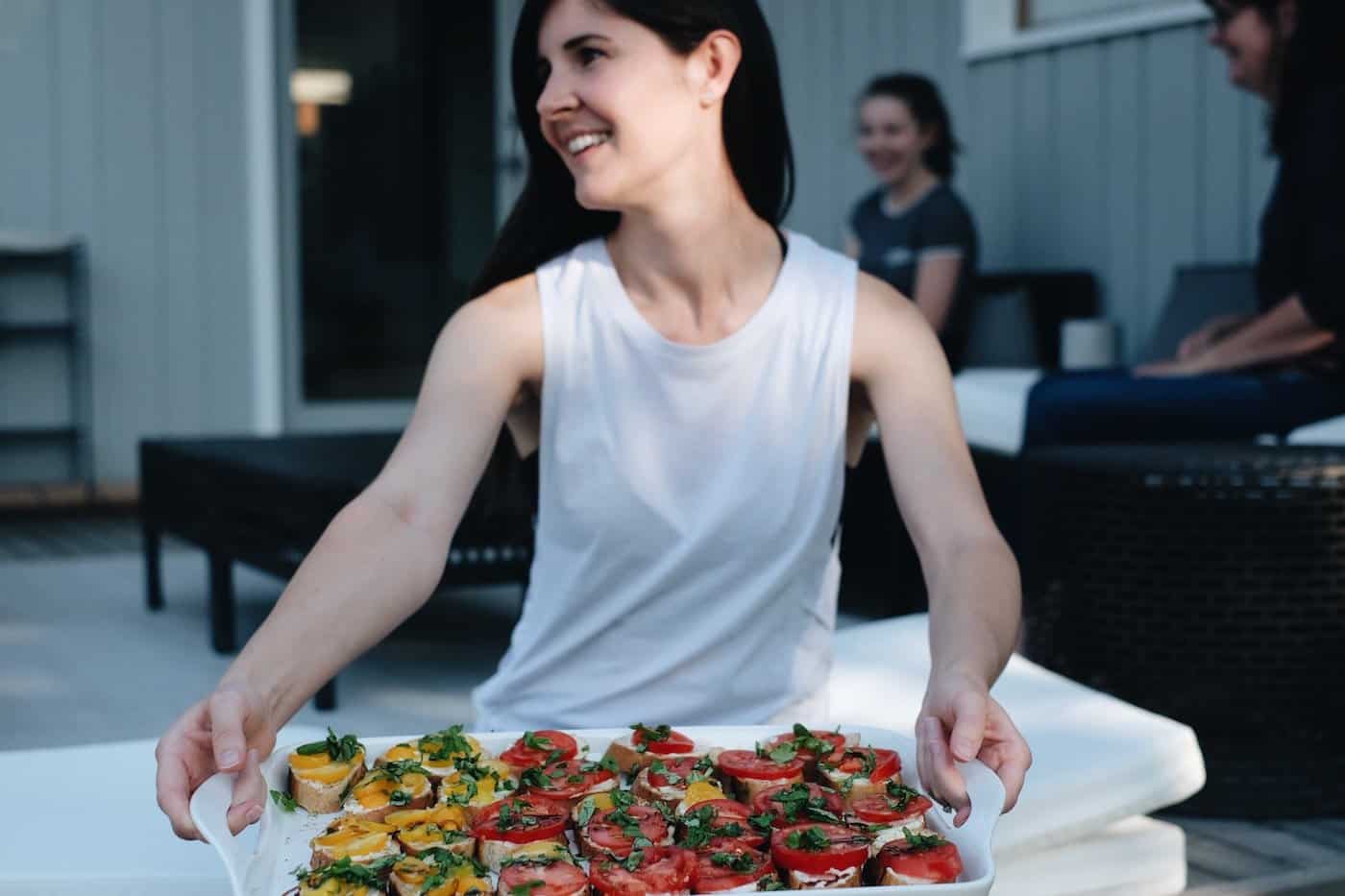
Choosing which vegetables to grow in your garden
If you’ve already set your garden goal using your garden plan, you’ll have a good idea of the traits you’re looking for in growing vegetables. For instance, if your goal includes growing enough tomatoes to make 52 cans of tomato sauce, you’ll want to grow a prolific paste tomato that produces a ton of tomatoes that also taste amazing. If you don’t know which vegetables you’d like to grow, check out my list of recommended vegetable varieties.
And of course, there are always space limitations. While it’s tempting to want to grow one of everything in the grocery store, you’ll be limited if you’re starting a balcony veggie garden (or really any reasonably-sized home garden).
Getting clear on the traits you’d like your vegetables to have will really help you when you start seed shopping. There are many varieties of each vegetable, each with different characteristics. Use your garden planner to record the desired characteristics of each crop you’d like to grow. The shortlist of crops you’d like to grow, plus your desired characteristics for each crop, becomes your seed shopping list!
Choosing & finding the best seeds for your garden
Now that you’re clear on which household produce favorites will grow well in your area and are aligned with your garden goal, it’s finally time to pull out the seed catalog. Scan through the varieties to find the best one for you based on your goals and growing conditions.
Be sure to keep your garden goal in the front of your mind when you go through seed catalogs or websites. For instance, I like to order organic seeds if possible. If you would like heirloom seeds that have stood the test of time, make sure you’re looking for heirloom seeds. The same goes for specialty seeds such as Biodynamic/Demeter seeds.
Here’s a list of seed companies with reviews to help you get a head start if you don’t yet have a favorite seed company to order from. Make sure you pick a company that aligns with your goals once you decide what to grow this year.
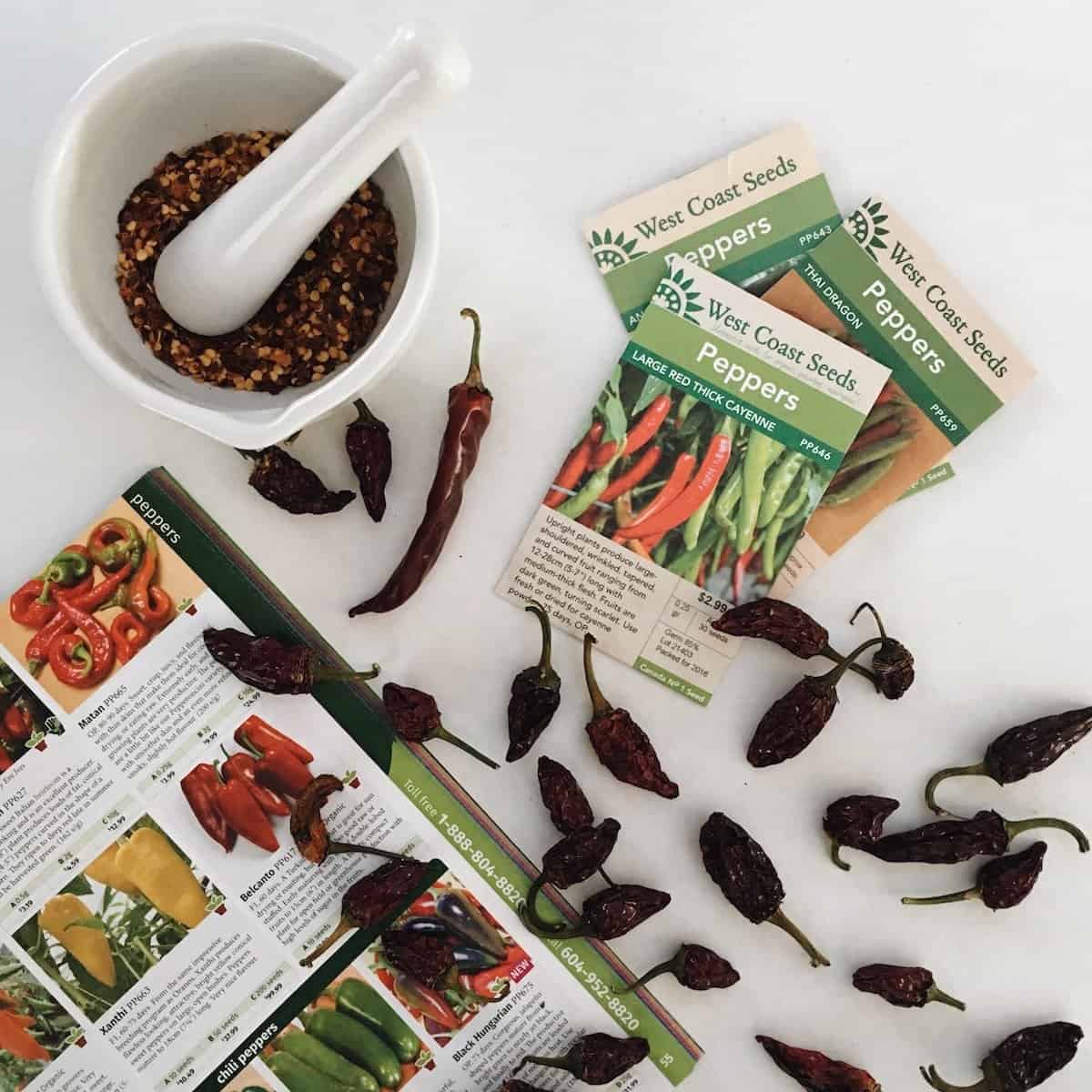
Buying seeds at seed swaps
If you’d rather buy local seeds instead of shopping from a catalog or website, the best place to find them is a local seed swap. Seed swaps often called “Seedy Saturday” or “Seedy Sunday” events, are community gatherings in which local growers sell and swap seeds.
These events usually occur in February or March, just in time for you to get your baby plants growing. Seed swaps are also a wonderful place to learn about gardening in general. Chat with some local seed providers about what to grow, what works well in your area, and any recommendations they have. You’ll likely get local advice from knowledgeable folks!
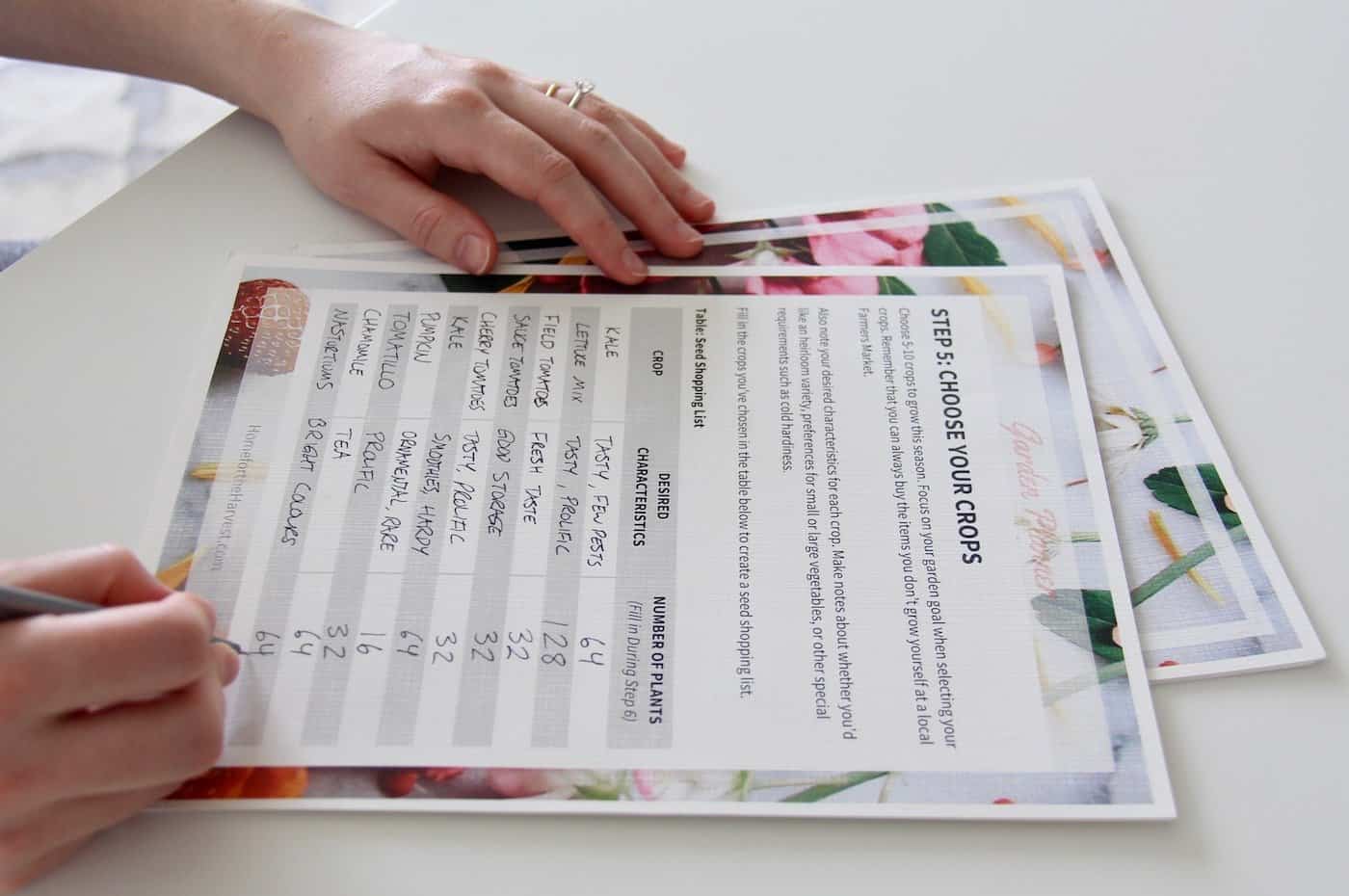
Fill in your Planner: Crop choice and seed shopping list
As you scan through seed catalogs or websites, make a list of the seeds you order. The Free Garden Planner I’ve put together includes a crop list page you can use to compile all the important info about your seeds. The table will help you organize these seeds into the proper order for seed starting once the season starts.
You can also use the planner for subsequent steps to start planning, such as scheduling and mapping out your garden. The planner will keep everything in one place, so you know when to expect things like your last frost date and be prepared!


